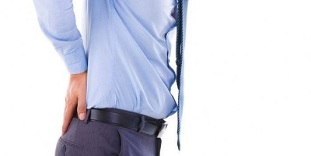Medical statistics claim that most men on the planet know what prostatitis is. However, the disease is not always detected and treated quickly. If we talk about the age category of the disease, the symptoms of prostatitis can be diagnosed at the age of 18, but the long-term chronic course of the disease with inflammation of the pancreas (prostate) is characteristic of elderly patients.
What is prostatitis in men
The name of the disease comes from the Latin "prostatitis", which literally translates as prostate gland and inflammation. Prostatitis in men is a generalized name for inflammation of the prostate, a complete picture of the causes, the appearance and mechanisms of development of which are not fully understood. It is not difficult to recognize the symptoms of prostatitis, but it should be borne in mind that in all patients the disease persists according to an individual scenario, can develop into a chronic form without specific symptoms.
How prostatitis manifests itself in men

Doctors divide the disease into different forms according to the patient's symptoms and clinical manifestations. It can be acute, chronic, bacterial, calculus, stagnant, infectious, purulent, and therefore prostatitis manifests itself in the form of various symptoms.
Sudden onset of severe pain in the scrotum, difficulty urinating, weak strength can be diagnosed. In the presence of the disease, sperm characteristics and ejaculation quality deteriorate. If you experience any of these symptoms, you should see your doctor.
symptoms of prostatitis
Symptoms can be diagnosed through a general urine and blood test. Studies will help identify the culprit for the appearance of the disease, and some infections may occur: for example, trichomoniasis, gardnerellosis, chlamydia and even gonorrhea. Bacteria enter the area through blood vessels from the bladder or rectum and cause health problems. The non-bacterial form of the disease is not detected by tests, but this is not an indication of the absence of bacteria. The consequences of both forms can be dire.
Symptoms of prostatitis in men are divided into two stages - latent and active. In the first stage, there are minor symptoms, but it already indicates the presence of the disease. The latent phase can last for years and is characterized by discomfort in the scrotum, sometimes at the head of the penis, in the anus. As a rule, men associate it with simple fatigue. When the pain is more intense and the emptying of the bladder begins to cause major problems, it means that the inflammation has progressed and the disease has reached an active stage.
The first signs

The disease has several stages of development. Initially, it may cause a constant urge to urinate, and there may be pain and burning in the toilet during this procedure. Pain in the lower back, pelvis and groin.
After detecting the first signs of prostatitis in men, you should consult an andrologist or urologist to avoid complicating the situation and protecting men's health.
Prostatitis Symptoms
The disease can manifest itself in three main symptoms:
- frequent desire to go to the toilet;
- pain;
- weak or no erection.
External symptoms of prostatitis include urinary problems. Urinary pressure is low, bladder emptying is painful, and there may be incomplete urine flow (in medicine this phenomenon is called ischuria). This is due to compression of the urethra by an inflamed gland. If inflammation is allowed to develop, it covers the urethra, rectum, urogenital system or causes the development of a tumor. After 30 years, all men need to be examined by a specialist every year.
Inflammation of the prostate causes different symptoms of prostatitis. While the symptoms of acute prostatitis can be severe and cause a very strong general feeling of discomfort, the symptoms with chronic prostatitis are generally milder. Not every patient has all the characteristic symptoms of the disease, the severity of symptoms can vary depending on the condition of the body and other factors.
To prevent the onset of the disease, a man should avoid:
- hypothermia;
- unbalanced diet (excluding fried foods, canned food, alcohol);
- sedentary lifestyle;
- bad habits;
- irregular sex life,
- Frequent sexual erections without ejaculation.
Pains

The main symptom associated with local symptoms is pain. By nature, they hurt, pull, explode or press. In men, the pain sensations in prostatitis are insignificant or strong and are always concentrated in the perineum, anus or sacrum.
The cause of pain symptoms is irritation of the prostate gland with the products of the inflammatory process. What are the other symptoms for prostatitis?
Highlights
Pain may be accompanied by discharge. From the external opening of the urethra, discharge of varying degrees of transparency, different density, and color, for example, becomes a thick milky white at the end of urine or feces. In the chronic form, the patient may have spermatorrhea - the discharge of semen into small pieces during bowel movements and muscle tension in the perineum.
In men, prostate discharge may be purulent greenish in color. When it consists of harmful epithelium, mucus, leukocytes, they are also observed in the slow course of the disease. This type of discharge, the presence of pain symptoms, chills and high body temperature indicate an acute form of the disease. If the patient does not go to a male urologist, the disease can lead to serious pathologies: prostate sclerosis, infertility.
Symptoms of chronic prostatitis
The first symptoms of chronic prostatitis may appear as discomfort, pain in the lower abdomen, and sometimes back and thighs. Sexual dysfunction develops within a few days. At the end of sexual intercourse, there may be pain in the tip of the penis, which disappears on its own within a few minutes. Eventually, each urination begins to be accompanied by a gradual increase in burning sensation and pain.
Symptoms of acute prostatitis in men

In this form, the disease is divided into catarrhal, follicular, purulent. In the first case, the symptoms of acute prostatitis in men are characterized by urinary excretion, the second is complemented by pain in the scrotum and fever. In the third case, the disease manifests itself in the form of a pancreatic abscess and the strongest manifestation of all the above symptoms.
Treatment of prostatitis in men
The treatment process includes measures to eliminate inflammation and obstruction in the prostate. Success depends on getting rid of them quickly. Treatment of prostatitis in men begins with a diagnosis by identifying the root of the problem. The doctor will take a swab from the urethra and prescribe antibiotic therapy if the result is positive. The duration of treatment will depend on the degree of damage to the body and how effectively the existing symptoms will disappear.
Young people, in most cases, get sick due to elemental hypothermia. As a result, the acute form of the disease progresses to combat which antibiotic therapy is used. If prostatitis is caused by stress, the root of the disease is treated by a neurologist. In such cases, the doctor prescribes soothing massages, electrophoresis and vitamins. Without eliminating the cause of the disease, getting rid of it will not work.
The following treatment mechanisms are used when symptoms of prostatitis and prostate adenoma appear:
- Antibiotics are an important component in the treatment of infectious diseases. The composition of drugs should have a wide range of effects.
- Alpha-blockers can be prescribed to improve blood circulation for faster healing of the prostate gland.
- Your doctor may recommend taking hormonal medications to restore your hormonal system.
- A muscle relaxant prescribed by a specialist reduces tension in the glandular muscles.
Herbal remedies are often used in the complex treatment of prostatitis.
If the above methods do not give the desired result, surgery is used. Sometimes it may be the only treatment possible.
Acute and chronic prostatitis syndromes in men can be treated with laser therapy. This method improves pain (functional units of the gland) and increases the patient's protection. Chronic prostatitis can be treated with both laser and medication. With a severe form of the disease, especially without obvious symptoms, the laser helps to quickly improve the patient's condition: after two or three procedures, the pain disappears, strength is completely restored.
























